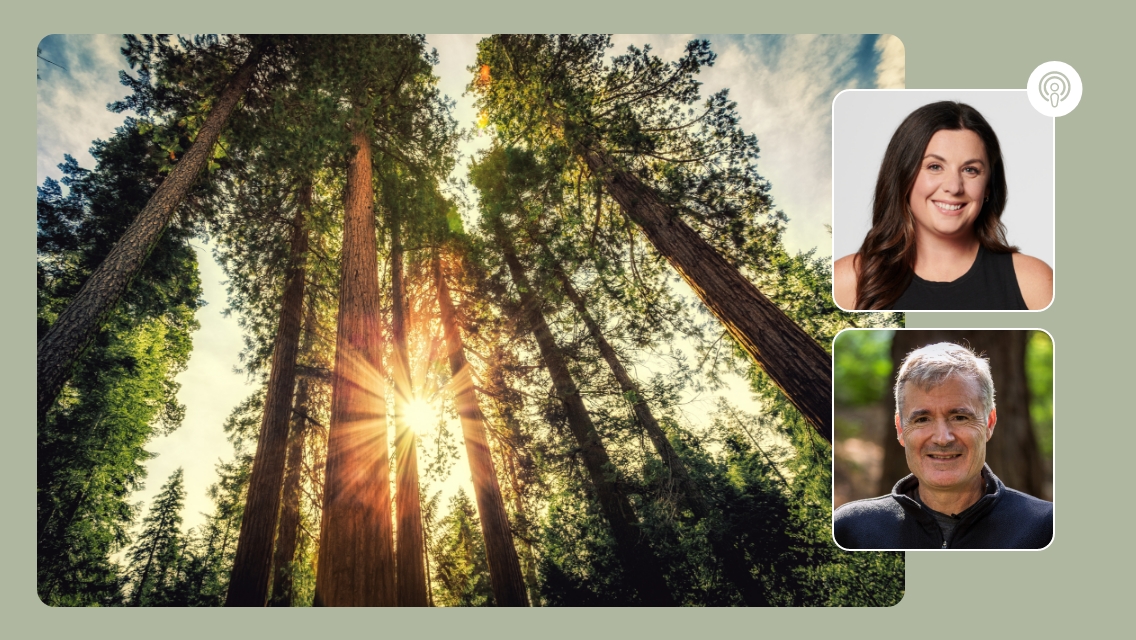During the depths of the pandemic lockdown, one of our neighbors wrapped a string of felt letters around a gnarled bur oak reading “HUG ME.” Who could resist?
Not me, and not Ludwig van Beethoven, who reportedly hugged a linden tree in his backyard routinely. “The woods, the trees, and the rocks give man the resonance he needs,” he wrote.
In 1982, the resonance provided by trees inspired the Japanese government to begin endorsing the practice of shinrin-yoku, or forest bathing. People have been retreating to the woods for millennia to reflect and restore, but the government saw shinrin-yoku as a chance to promote a centuries-old Japanese practice as a form of ecotourism.
It quickly became popular among the country’s exhausted tech workers, who discovered that spending time in a forest helped them recover in ways nothing else could. Turns out, it can help the rest of us too.
Plant Medicine
Forest bathing (also called forest therapy) involves more than just a walk in the woods. Professional guides lead excursions where participants spend hours in forest environments — listening, observing, touching, and smelling their surroundings. The point is to reconnect with nature in a deliberate way.
“We walk slowly so we can focus our senses on the myriad ways the living forest surrounds and touches us,” explains M. Amos Clifford in his book Your Guide to Forest Bathing. Clifford founded the Association of Nature and Forest Therapy Guides and Programs.
While spending time in nature is abundantly beneficial without a guide, Clifford believes that some direction can help us overcome the innate busyness that prevents us from immersing ourselves. “Most of us have never learned the art of stillness in nature,” he notes.
Learning how to practice deep engagement with trees — studying root systems, smelling pine bark, listening to rain on leaves — allows us to enjoy forest bathing’s full range of health benefits.
That said, the research would suggest that forest bathing’s deepest healing effects are provided not by a guide but by the forest itself.
5 Health Benefits of Forest Bathing
These are some of the ways forest bathing can support our mental and physical health.
It reduces stress.
Surprising no one, research indicates that time spent in a forest setting relaxes us. Specifically, studies gathered by Japanese researchers show that it reduces levels of salivary cortisol (a key stress hormone) by about 15 percent, and can lower blood pressure. Even looking at images of forests can produce positive emotional effects.
It supports mood and relieves depression.
Not only does time among trees relieve everyday stress, but it also may help treat more-tenacious mental health issues. One study found that patients diagnosed with major depressive disorder who received cognitive behavioral therapy in a forest setting experienced substantially greater symptom relief than patients treated in a hospital.
It increases immune function.
Trees and plants emit airborne chemicals called phytoncides. These volatile organic compounds help protect the plants from insects and rot, and when humans inhale phytoncides, they protect our health too.
Japanese researchers observing a dozen men found that after three two-hour hikes in a forest, the subjects showed a 50 percent increase in natural killer cells — key players in the immune system that help fight viruses and tumors. Additional studies have shown that these benefits may last up to a month after exposure.
It improves focus and creativity.
Focusing the mind requires energy and effort. Accordingly, trying to focus on one task while we’re distracted by a variety of competing stimuli (as most of us do on most days) can produce “directed attention fatigue” — the sense of feeling cognitively drained.
Spending time in nature allows our attention to wander, giving it a break. This helps renew our cognitive capacity. One 2012 study found that participants in an Outward Bound program who spent four days in nature improved their performance on creative problem-solving tasks by 50 percent.
It restores our relationship with nature.
Clifford believes that forest bathing does not simply provide a connection to nature; it helps us remember our connection to it. And an awareness of our innate place in nature can help sustain us.
“When the forest is allowed its place within you, it supports your body’s natural capacity for wellness and healing.”
Natural Healing
Energy medicine has a long history across many cultures. Today, we also have research to confirm the value of these subtle modalities for health and well-being. Explore other articles in our Natural Healing department to learn how you can embrace these modalities in your own life.





This Post Has 0 Comments